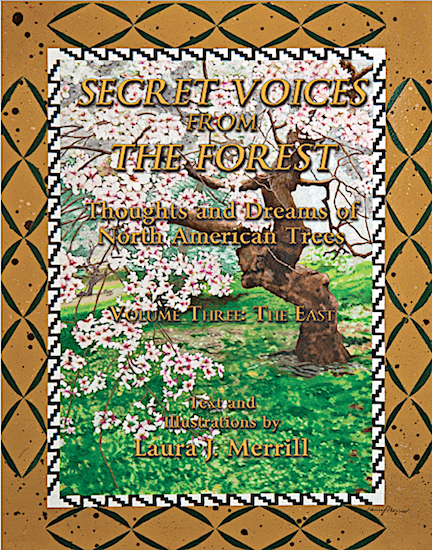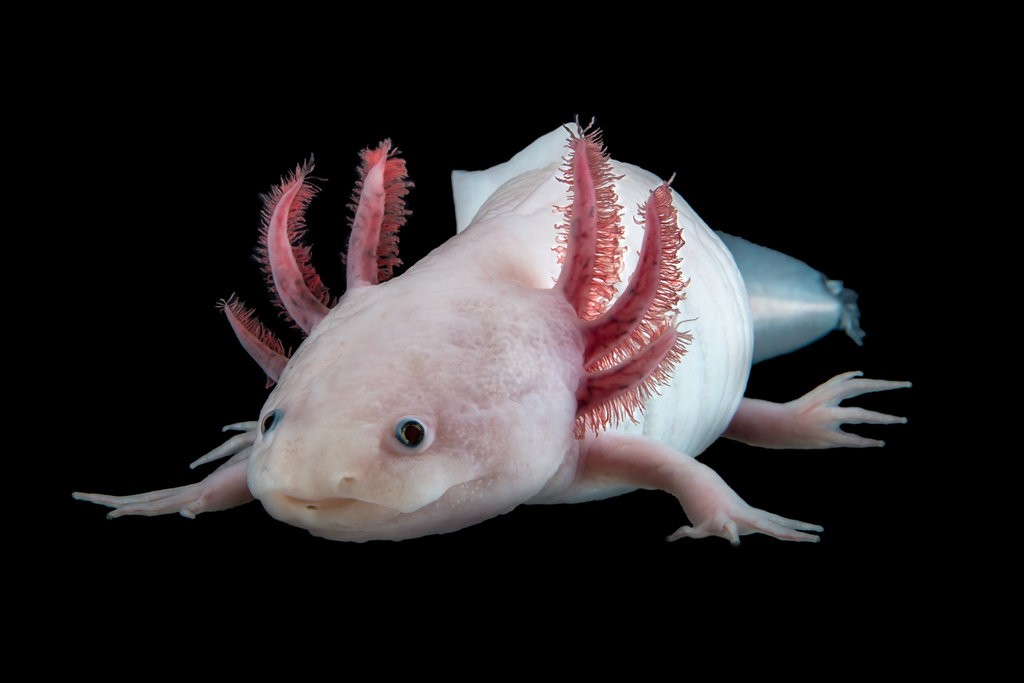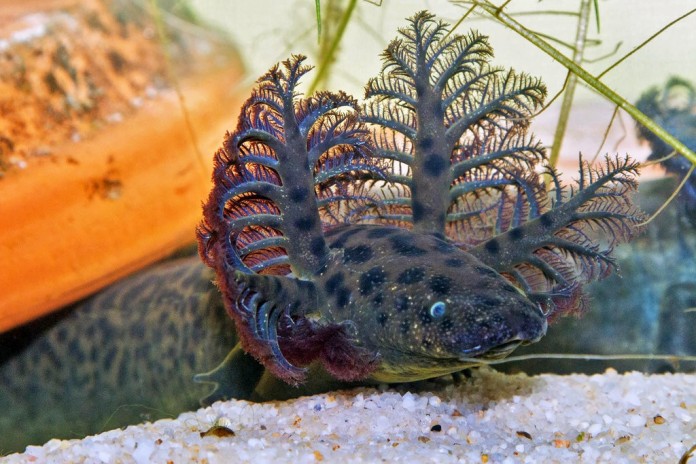Today, for your holiday reading, four articles about salamanders, all from the New York Times. I found they have a number of articles about these sometimes exotic creatures, going back a few years, although these were all published in 2018.
“A Salamander of Legend Emerges From Southern Swamps,”
by Asher Elbein, Dec. 14, 2018
“It’s eel-shaped and leopard-spotted, and it has no hind-limbs. It grows to two feet long. And yet until recently, hardly anyone had ever seen it.
A team of researchers has discovered of new species of salamander in the pine forests of northern Florida and southern Alabama. The so-called reticulated siren is the largest vertebrate found in the United States in decades, and the first new member of its family since 1944.”
This is a link to the entire, fascinating article.
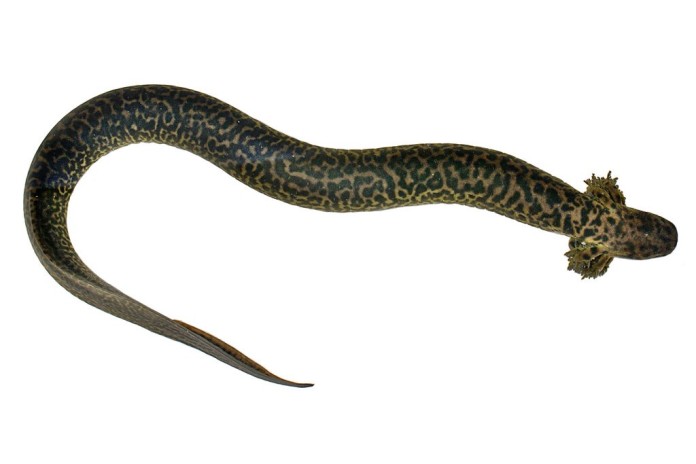
Photo: David Steen
“Vanishing in the Wild, These Salamanders Found Refuge in a Convent,”
by Geoffrey Giller, July 30, 2018
“The Basílica de Nuestra Señora de la Salud, built in the 1500s with whitewashed walls and red stone columns, hosts a thriving colony of endangered salamanders. Scientists call them Ambystoma dumerilii, but the nuns in Pátzcuaro, Mexico call them achoques.
The achoques live their entire lives underwater and keep the external gills that most salamanders have only as aquatic larvae.
Carefully tended by the nuns, about 300 achoques live in glass aquaria and white enamel bathtubs lining the walls of a long hallway and two adjoining rooms in the convent. The nuns support themselves partly by selling a cough syrup called jarabe made from the salamanders’ skin.
They are found nowhere but Lake Pátzcuaro, and outside the convent their numbers are falling fast. This colony may be critical to the salamanders’ prospects in the wild.”
A link to the article is here.
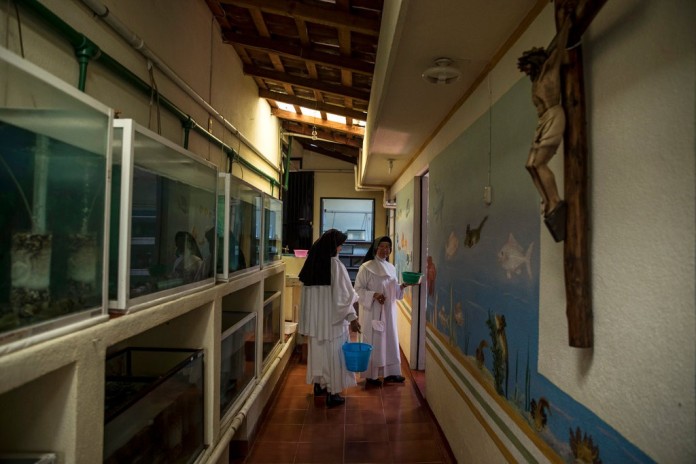
“China’s Giant Salamanders Pose a Conservation Conundrum,”
by Rachel Nuwer, June 4, 2018
“The Chinese giant salamander, the world’s largest amphibian and a critically endangered species, has quietly slipped toward extinction in nature. Following an exhaustive, years long search, researchers recently reported that they were unable to find any wild-born individuals.
Millions of giant salamanders live on farms scattered throughout China, where the animals are bred for their meat. But another study by Dr. Turvey and his colleagues shows that reintroducing farmed animals is not a simple solution for saving the species in the wild.
In the wild, Chinese giant salamanders were not just one species but at least five, and perhaps as many as eight. On farms, they are being muddled into a single hybridized population adapted to no particular environment.
“The farms are driving the extinction of most of the species by homogenizing them,” said Robert Murphy, a co-author and senior curator of herpetology at the Royal Ontario Museum. “We’re losing genetic diversity and adaptations that have been evolving for millions of years.”
Many have been released into the wild, in the hope of maintaining the species, but the genetic mixup has created an issue of “pure” wild species.
Here is a link to the article. www.nytimes.com/2018/06/04/science/giant-salamanders-china.html?action=click&module=RelatedLinks&pgtype=Article
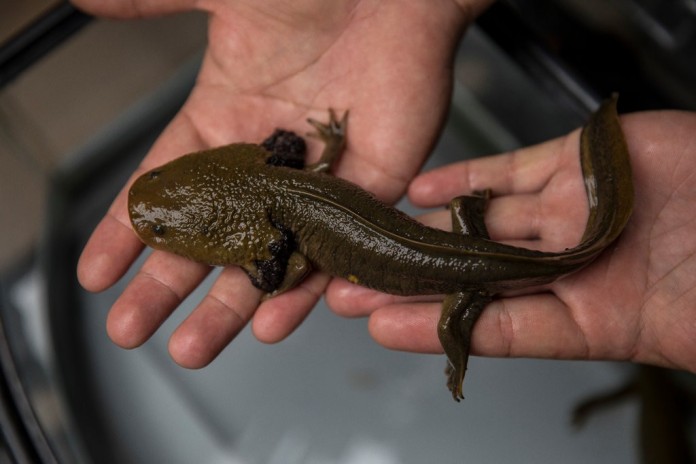
photo credits: Goh Chai Hin/Agence France-Presse — Getty Images
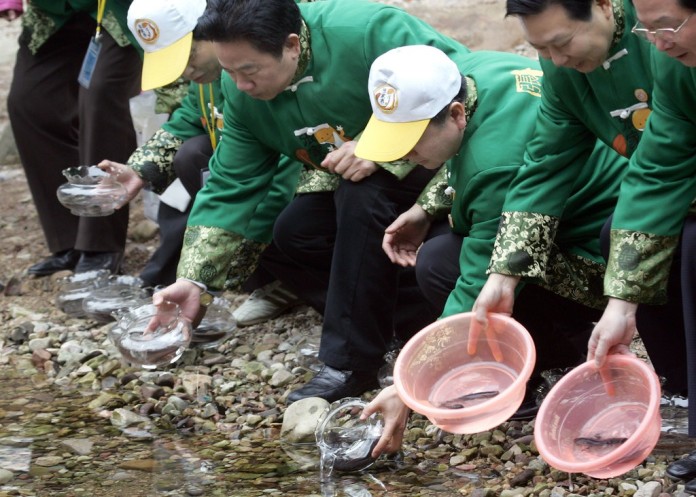
“The Smiling Axolotl Hides a Secret: A Giant Genome,”
by Nicholas Bakalar, Feb. 1, 2018
“Scientists have decoded the genome of the axolotl, the Mexican amphibian with a Mona Lisa smile. It has 32 billion base pairs, which makes it ten times the size of the human genome, and the largest genome ever sequenced.
The axolotl, endangered in the wild, has been bred in laboratories and studied for more than 150 years. It has the remarkable capacity to regrow amputated limbs complete with bones, muscles and nerves; to heal wounds without producing scar tissue; and even to regenerate damaged internal organs.
This salamander can heal a crushed spinal cord and have it function just like it did before it was damaged. This ability, which exists to such an extent in no other animal, makes its genes of considerable interest.
This is the first salamander genome ever sequenced. The reason it took so long is that it has so many repetitive parts. The study’s author believes that it will open up a wealth of opportunities in studying how organisms regenerate.”
Here is the link. www.nytimes.com/2018/02/01/science/axolotl-genes-limbs.html?action=click&module=RelatedLinkspgtype=Article
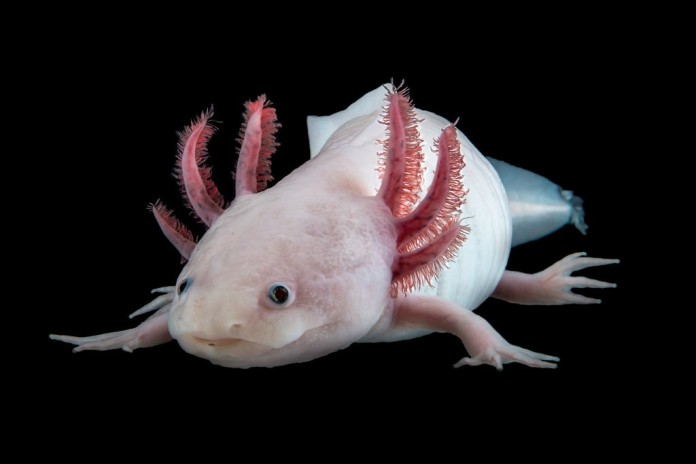
photo credit: Research Institute of Molecular Pathology
Spotlight on:
Harbor seal
Although Harbor seals have the greatest geographical range of all seals, encompassing both Pacific and Atlantic Oceans in the Northern Hemisphere, they stay in the coastal areas, rarely going out into the ocean further than ten miles.
They hunt alone, but are sociable when they “haul out” to rest or breed on places that are protected, which can be a beach, a rocky shore, or an iceberg.
Before a seal pup is born, it is covered with a white wooly coat. At birth, it weighs about twenty-five pounds and can swim and dive within four hours. The mother’s milk is 40% fat, so the pup doubles its weight the first month, after which time it is left to learn to hunt and fend for itself.
Seals are distantly related to dogs and bears. They have upper and lower arms and legs that are concealed, and only their hands and feet extend outside the casing of the skin. The hands and feet are known as “flippers,” and are flat and elongated, each having five digits.
They typically dive for about three minutes at a time, but can stay underwater for a half an hour and dive as deep as 600 feet. To do this, they breathe out before diving, using oxygen already in their bodies and slowing their heartbeat from about one hundred beats per minute to ten. In one breath a seal exchanges 90% of the air in its lungs, while we can only change 20%.
Both the United Kingdom and the United States prohibit the killing of seals, although there can be a high mortality rate for pups in some countries, as they can get caught in bottom trawl nets. From Volume 3 of Secret Voices: Crabapple Companions
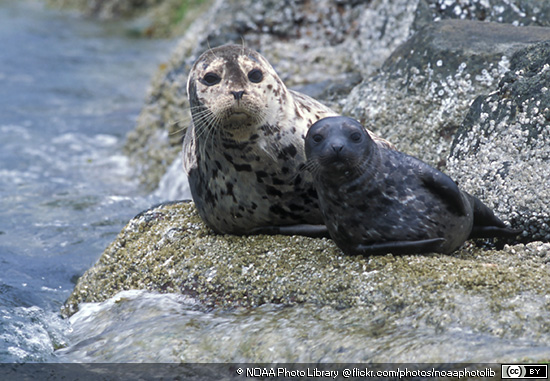
Secret Voices from the Forest – Volume Three: The East is available on Amazon.
